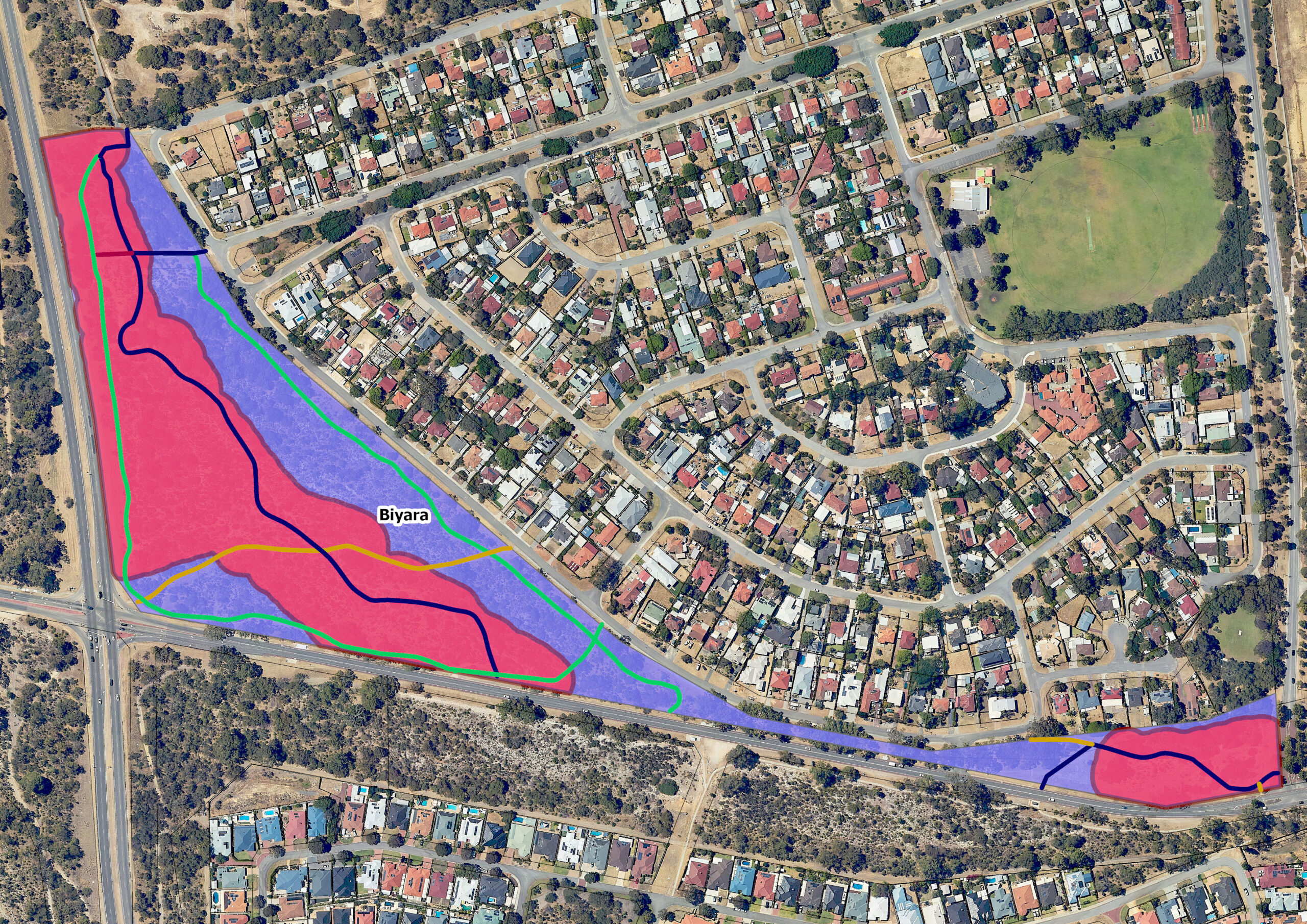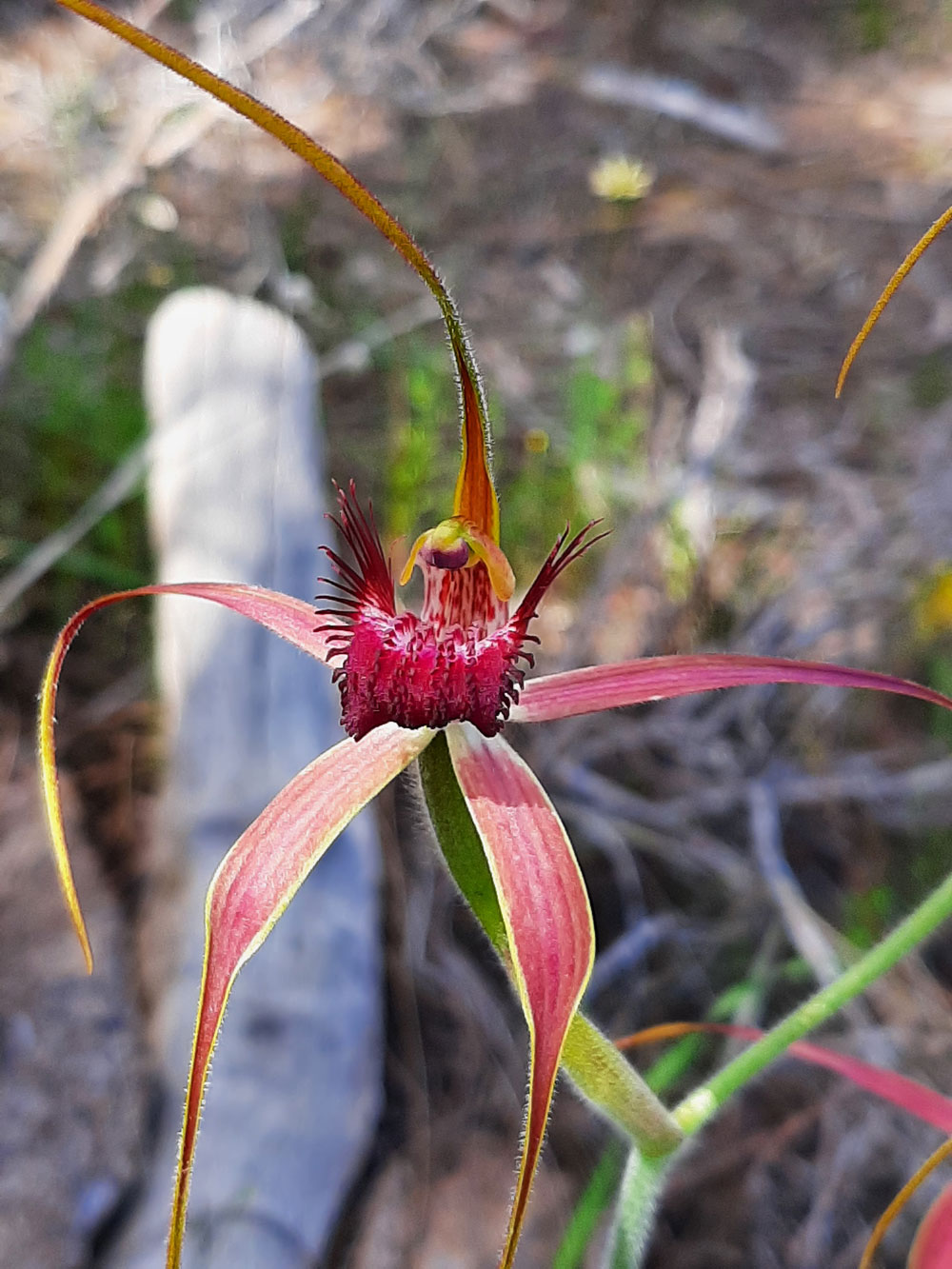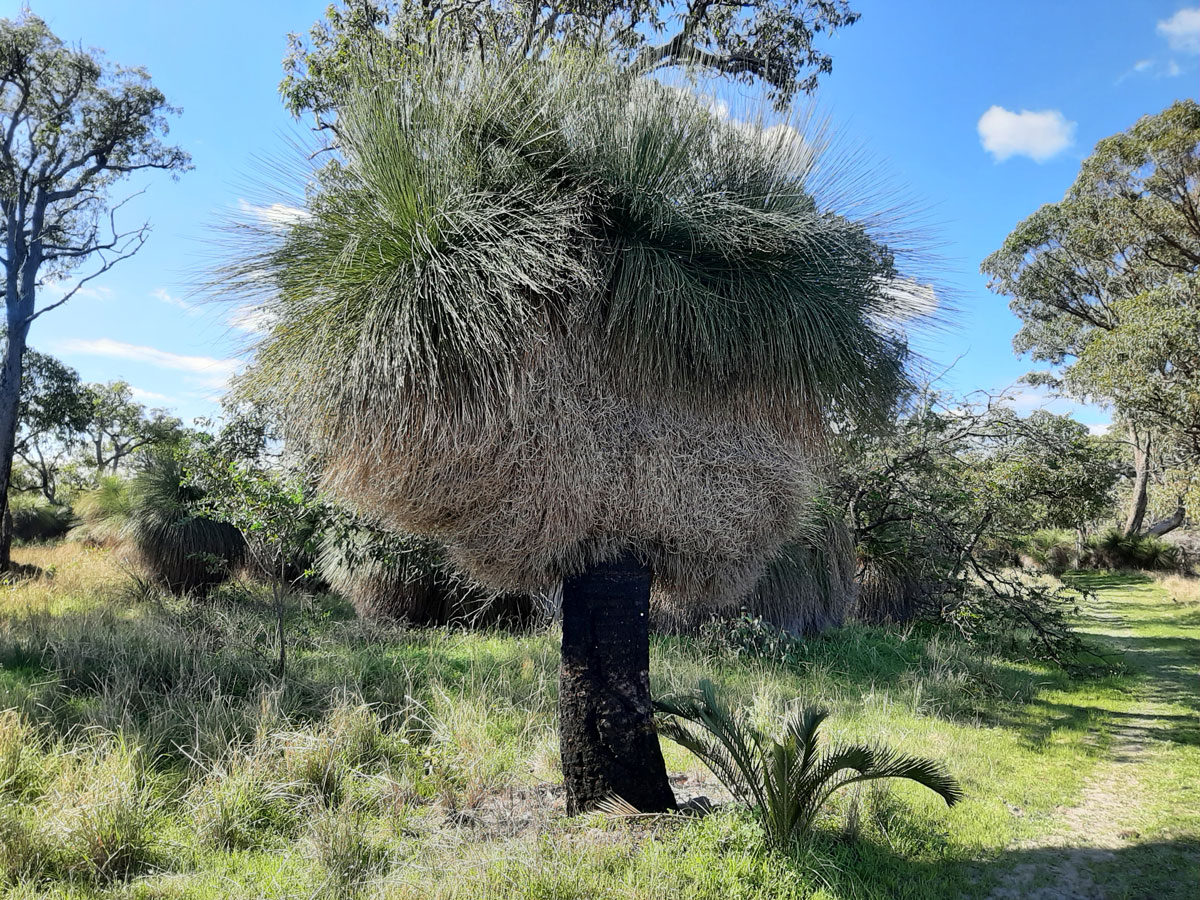Biyara (Banksia attenuata) is one of four key banksia species that characterise the nationally protected ecological community ‘Banksia woodlands of the Swan Coastal Plain’. These woodlands can be found on deep sands, particularly Spearwood and Bassendean dune systems found here. On the transition zone from limestone ridge to Bassendean sand tuart, jarrah and marri are found along with the banksia species forming the tree canopy. With its tree layer of banksias, sheoaks, scattered eucalypts and balga, many Western Australians recognise this ‘bush’ as home. Unfortunately, the once widespread woodlands are being fragmented by urban development. At Biyara, both the tree layer and the understorey of perennial shrubs like Hibbertia and hairy yellow pea can still be found. Quenda are often sighted. In kambarang (second spring in the Nyungar six seasons) carousel spider orchids flower in this woodland. These, like other spider orchids, use a sexually deceptive system of pollination where flowers are mistaken for female insects by males. The presence of orchids requires high quality bushland that can support the insects required.
Biyara


Carousel spider orchid (Caladenia arenicola)
The land between Progress Drive and Stock Road was used for a variety of agricultural activities after European colonisation. In the 1920s between Blackwood Avenue and Phoenix Road, extending to Bibra Lake, University of Western Australia endowment land was used as a commonage for grazing dairy herds. Biyara was within this block and would have been traversed by grazing animals and used for firewood collection. Following the uptake of motorised transport, dairying declined in the district as farmers moved to more distant locations with better soil for pasture. The then Shire of Cockburn eventually exchanged land with the University, which acquired the Murdoch University site, to allow State Housing Commission redevelopment. In the 1950s, part of the resumed land became the new suburb of Coolbellup.
Aboriginal people with connections from across WA took up State Housing Commission homes in the new suburb of Coolbellup.
Nyungar Elder and long-term Coolbellup resident, Reverend Sealin Garlett, explained the deep connection of Aboriginal people to the Bibra Lake and surrounding area in a submission to the Federal Minister for the Environment against the Roe Highway development:
This place here has a deep significance for our Noongar people – a very spiritual place, a place that we can look back on yesterday, and feel the spirits of yesterday, and to know that they travel through this land, their voices become our voices of how deeply important this land is to us.

Well known balga on the corner of Stock and Forrest Roads in Biyara

“Save Me” tuart tree during clearing along Forrest Road in 2017 (Photo: S. Hoult)
Extensive clearing took place at Biyara during 2017, leaving sandy bare patches. Toward Coolbellup Avenue a particularly tall tuart tree is remembered for its sign “Save Me” during the Roe 8 protests and it survives today. Restoration work commenced in 2019 at the northern end of the section and today Biyara has been extensively rehabilitated. On soils rejected by dairy farmers, endemic species thrive. Rehabilitating Roe 8 revegetation grows alongside original zamias which re-sprouted after the Roe 8 clearing. While Biyara is a bush fragment today, surrounded by roads and housing, it remains a place where people can walk and experience nature.
